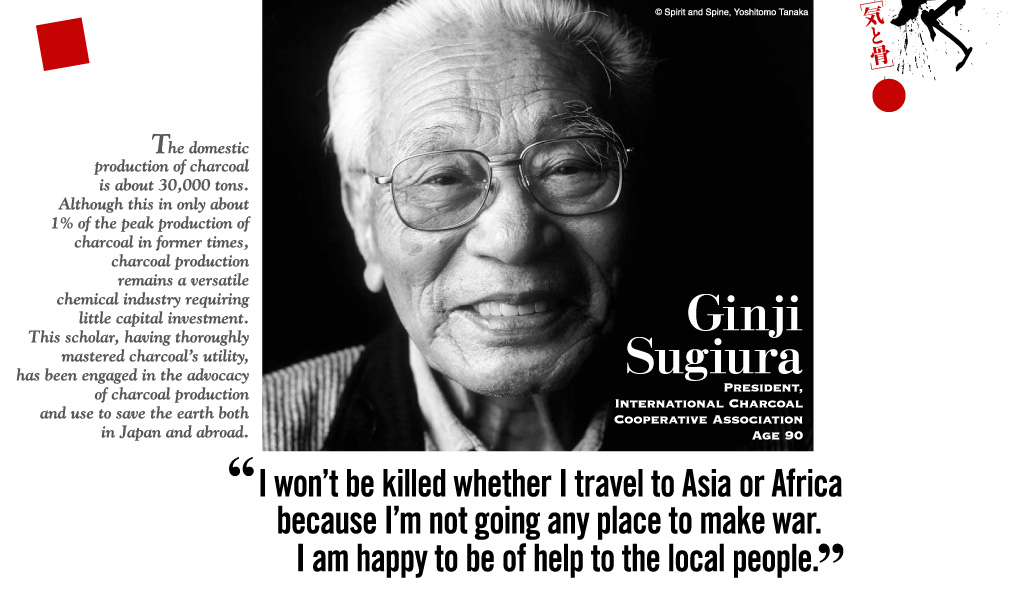tudies on charcoal production began with gasoline refining from broadleaf trees. Ginji Sugiura had been pursuing national policies at the Imperial Forestry Bureau during wartime. He responded to the call-up for military service and returned to work after being demobilized from China. Since that time his passion has been the study of charcoal.
After retirement from the office he has been actively contributing to public welfare projects through charcoal making. Sugiura assisted in forestry in Shimokawa Town, Hokkaido, to produce charcoal which led to the restoration of the town. Porous charcoal adsorbs moisture and nutrients which aids in soil enrichment, water purification and environmental improvement. Charcoal and its by-products, such as wood ash and pyroligneous acid, are a kind of medicine for the earth. Sugiura and local residents used charcoal to enhance the purification of water runoff from Mt. Dando to the mouth of the Yahagi River in his hometown of Mikawa. And fireflies have returned to the river in Hachioji thanks to the purification efforts of Sugiura and his team of local housewives. He assisted Yamato Welfare Foundation with the construction of a charcoal kiln and taught charcoal making techniques at a facility for people with autism in Fukuoka. At the University of Tsukuba, a charcoal-making workshop for children with school refusal syndrome has produced positive results.
In fact, Sugiura’s endeavors go well beyond Japan. At the request of the Japan International Cooperation Agency (JICA), he provided instructions on charcoal making in Malaysia. He has organized the International Charcoal Cooperative Association, which aims for environment improvement, and has traveled to Asia, Africa and Brazil. With nothing but wood and a drum, charcoal can be produced anywhere in the world. Sugiura works hard together with local people wherever he goes to teach and make it. The 90-year-old master of charcoal making marches on!







































































































